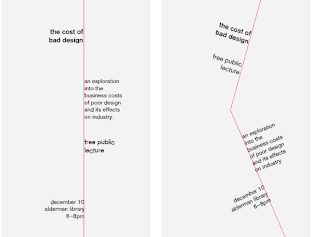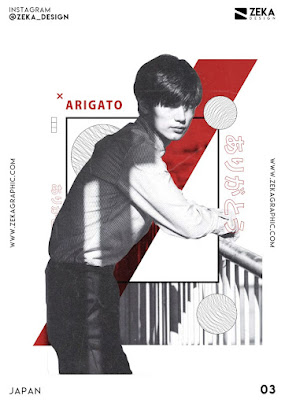Advanced Typography Task 1 / Exercises
22/4/2024 - /5/2024 / Week 1 - Week 4
Alyssa Lim Shyn Yi / 0365877
Typography / Bachelor of Design (Honours) in Creative Media / Taylor's University
Task 1: Typographic System & Type & Play
TABLE OF CONTENT
1. Instructions
2. Lectures
- Typo 1 Typographic Systems
3. Exercises
- Task 1
4. Feedback
5. Reflection
6. Further Reading
INSTRUCTIONS
<iframe src="https://drive.google.com/file/d/1gSjgTR1Osat1O9TKeKbhow_ny2as_Yuo/preview" width="640" height="480" allow="autoplay"></iframe>
Radial
Dilatational
Random
Grid
Modular
Transitional
Bilateral
LECTURES
Week 0: AdTypo_1_Typographic Systems
Major variations with an infinite number of permutations:-
- Axial
- Radial
- Dilatational
- Random
- Grid
- Modular
- Transitional
- Bilateral
Typographical organization is complicated as the elements depends on others
for operation. Other factors including hierarchy, order of reading,
legibility, and contrast also come into play.
The typographic systems are related to what architects term
shape grammars. They are similar that the systems has a set of rules that is unique and
provides a sense of purpose that focuses and directs the decision making.
* Shape Grammars= A
set of shape rules that apply in a step-by-step way to generate a set or
language, of designs.
Axial System
All elements are organized to the left or right of a single axis.
Figure 1.0 - Axial System Examples, Week 0, (17/4/2024)
Radial System
All elements are extended from a point of focus then spread out according to
particular point of focus.
(Can be multiple points of focus)
Figure 1.1 - Radial System Examples, Week 0, (17/4/2024)
Dilatational System
All elements expand from a central point in a circular manner
(Can have multiple circles with information around it)
Figure 1.2 - Dilatational System Examples, Week 0, (17/4/2024)
Random System
Elements appear to have no specific pattern or relationship.
Figure 1.3 - Random System Examples, Week 0, (17/4/2024)
Grid System
A system of vertical and horizontal divisions (Very common)
Figure 1.4 - Grid System Examples, Week 0, (17/4/2024)
Transitional System
An informal system of layered banding
Figure 1.5 - Transitional System Examples, Week 0, (17/4/2024)
Modular System
A series of non-objective elements that are constructed in as a standardized
units
(Units can be randomly placed)
Figure 1.6 - Modular System Examples, Week 0, (17/4/2024)
Bilateral System
All text is arranged symmetrically on a single axis
Figure 1.7 - Bilateral System Examples, Week 0, (17/4/2024)
Exercises
Task 1
For this task, we are required to explore 8 systems which are arial, radial, dilatational, random, grid, modular, transitional & bilateral using Adobe InDesign. The content for our task are given in the MIB booklet. Moreover, we were also required to watch lecture videos talked about InDesign formatting and additional explanation on modular system.
The Design School,
Taylor's University
All Ripped Up: Punk Influences on Design
or
The ABCs of Bauhaus Design Theory
or
Russian Constructivism and Graphic Design
Open Public Lectures:
November 24, 2020
Lew Pik Svonn, 9AM-10AM
Ezrena Mohd., 10AM-11AM
Suzy Sulaiman, 11AM-12PM
November 25, 2020
Muthu Neduraman, 9AM-10AM
Fahmi Reza, 10AM-11AM
Fahmi Fadzil, 11AM-12PM
Lecture Theatre 12
or
The ABCs of Bauhaus Design Theory
or
Russian Constructivism and Graphic Design
Open Public Lectures:
November 24, 2020
Lew Pik Svonn, 9AM-10AM
Ezrena Mohd., 10AM-11AM
Suzy Sulaiman, 11AM-12PM
November 25, 2020
Muthu Neduraman, 9AM-10AM
Fahmi Reza, 10AM-11AM
Fahmi Fadzil, 11AM-12PM
Lecture Theatre 12
- Size 200mm x 200mm, 2 pages
- 3 columns, column gutter is 5mm
- All margins should be 10mm
- Black & additional color
- Minor graphical elements (line, dot, etc.)
Axial
Radial
Dilatational
Random
Grid
Modular
Transitional
Bilateral
Feedback
Reflection
Further Reading
Figure ,Typographic Systems by Kimberly Elam (24/4/2024)
For this task's further reading, I have chosen a book named "Typographic Systems" written by Kimberly Elam. The following book discussed on eight major variations with infinite variety of composition within each system. Each system has a set of rules that is unique and provide a sense of purpose that focuses and directs the decision-making. Hence, the visual examples in this book shows a broad range of design solution and gives designers an insight into expanding their knowledge of organizational approaches to typographic design.
Throughout the journey of reading this book, I have found a few factors that could affect the designs of the typographic systems. For example, project elements & process, constraints and options, the circle and composition, and non objective elements.
In overall, I would say this is a well written book for me to have better understanding about typographic systems and give me inspirations in design work for the eight systems.
Quick Links
















.png)

.png)
.png)
Comments
Post a Comment